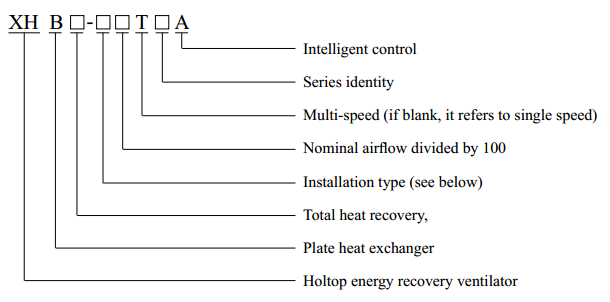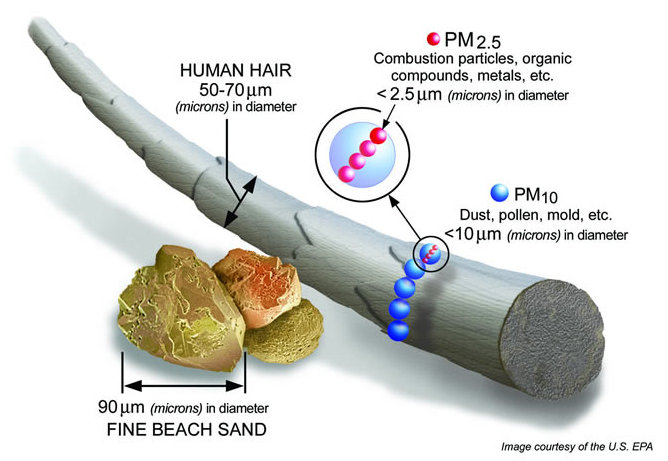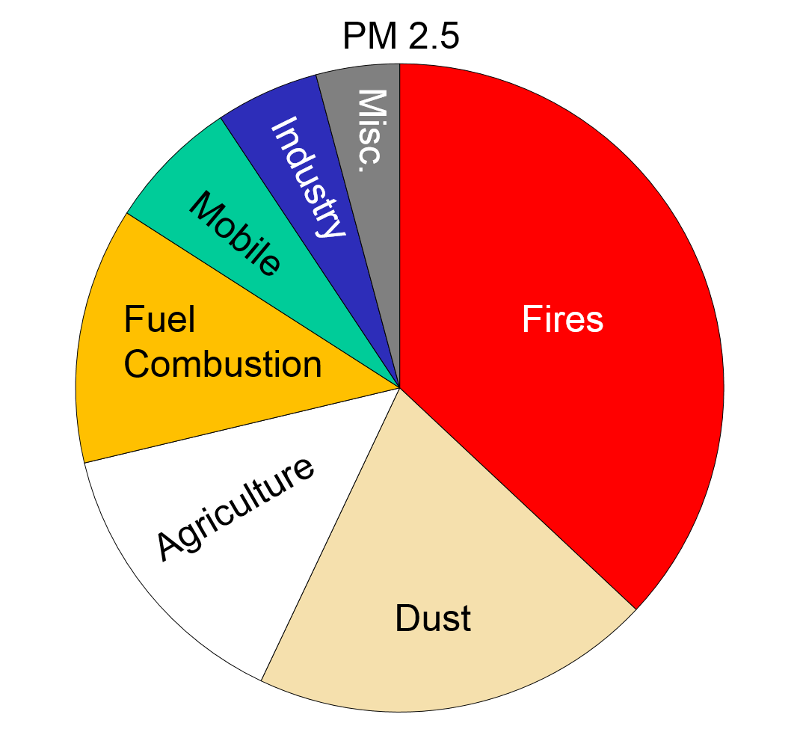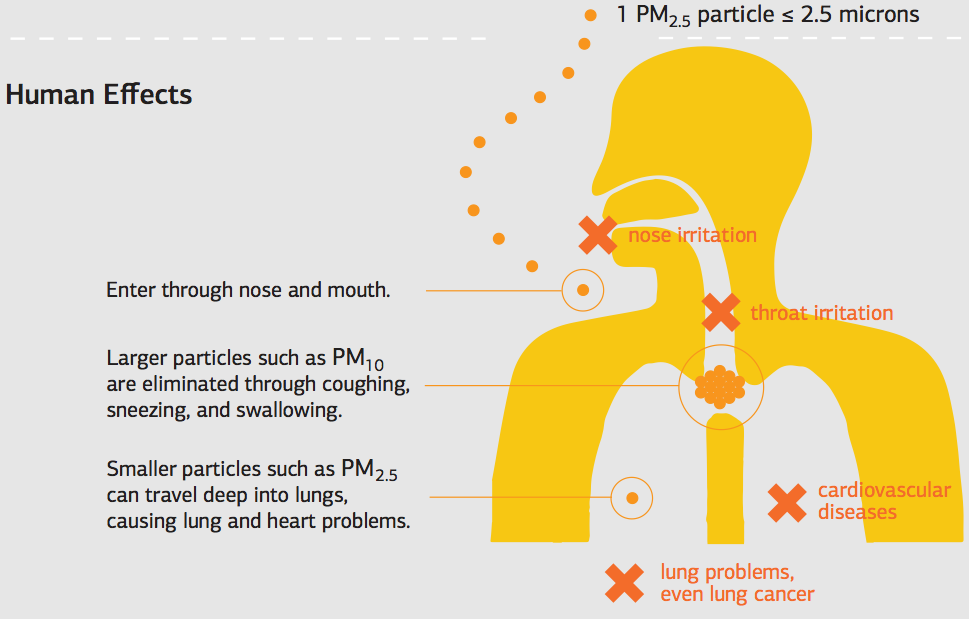I.Basic Knowledge
Energy recovery ventilation (ERV) is the energy recovery process of exchanging the energy contained in normally exhausted building or space air and using it to treat (precondition) the incoming outdoor ventilation air in residential and commercial HVAC systems. During the warmer seasons, the system pre-cools and dehumidifies while humidifying and pre-heating in the cooler seasons. The benefit of using energy recovery is the ability to meet the ASHRAE ventilation & energy standards, while improving indoor air quality and reducing total HVAC equipment capacity.
In a word, Energy Recovery Ventilator (ERV) allows fresh air into a building, while retaining pre-conditioned heating or cooling.
The Heat & Energy Recovery Ventilator is composed of two fans for air supply and exhaust, air filters, an energy recovery exchanger, and an intelligent control system. Even though you close the window, the ventilator can supply fresh air indoor after multiple filtration and exhaust polluted air from indoor. The two fans can make the indoor airflow circulate and balanced ventilation. At the same time, the standard heat exchanger can recover the energy of exhaust air and return to the incoming fresh air. Thus, it’s able to make the outdoor air cool in summer and the outdoor air warm in winter with a slight power consumption.
Heat recovery heat exchangers transfer heat from one air stream to the other, without allowing moisture transfer. This means they are well suited to climates where summer humidity levels are reasonably low.
Energy recovery exchangers provide both heat and moisture recovery, allowing moisture to be transferred from the incoming air stream to the outgoing exhaust stream during humid summer conditions, thereby providing dehumidification, which can increase occupant comfort and reduce the risk of mould. They are well suited to higher humidity locations.
Heat&Energy Recovery Ventilators
Model description

Note: Installation type
Suspended type, L-Floor type
Example
XHBQ-D10TH refers to suspended type ERV with total heat exchanger, TH series, airflow of 1000m3/h, 3 speeds.
Holtop AHU are designed and selected according to professional software, providing users with reasonable, economic, and practical air conditioning solutions. The features of Holtop AHU selection software also include:
Sound project and AHU query management
Precise airflow and unit section divisions
Multiple heat recovery options and functional section combinations
The air state point calculation of main sections
Various optional parts
l Flexible unit combinations
l Professional and detailed selection reports output
Design your project using Holtop Air Handling Units
Holtop AHUs are based on a completely modular design, capable of adapting to the needs of a variety of installation types, and developed by paying special attention to energy efficiency. Please provide details of your project and requirements as much as you can so we can make a proposal for you as soon as possible.
| PM2.5 refers to atmospheric particulate matter (PM) that have a diameter of less than 2.5 micrometers, which is about 3% the diameter of a human hair. |
 |
| Sources of PM2.5:Fine particles can come from various sources. They include power plants, motor vehicles, airplanes, residential wood burning, forest fires, agricultural burning, volcanic eruptions and dust storms.Some are emitted directly into the air, while others are formed when gases and particles interact with one another in the atmosphere.
For instance, gaseous sulfur dioxide emitted from power plants reacts with oxygen and water droplets in the air to form sulfuric acid as a secondary particle.
|
| Why Are PM2.5 Dangerous?Since they are so small and light, fine particles tend to stay longer in the air than heavier particles. This increases the chances of humans and animals inhaling them into the bodies. Owing to their minute size, particles smaller than 2.5 micrometers are able to bypass the nose and throat and penetrate deep into the lungs and some may even enter the circulatory system.Studies have found a close link between exposure to fine particles and premature death from heart and lung disease. Fine particles are also known to trigger or worsen chronic disease such as asthma, heart attack, bronchitis and other respiratory problems.
A study published in the Journal of the American Medical Association suggests that long-term exposure to PM2.5 may lead to plaque deposits in arteries, causing vascular inflammation and a hardening of the arteries which can eventually lead to heart attack and stroke. Scientists in the study estimated that for every 10 micrograms per cubic meter (μg/m3) increase in fine particulate air pollution, there is an associated 4%, 6% and 8% increased risk of all-cause, cardiopulmonary and lung cancer mortality, respectively. Children, older adults and those who are suffering from lung and/or heart disease are especially vulnerable to the adverse effects of fine particles in the air and should take special precautions when ambient PM2.5 crosses unhealthy levels.
How to Protect Yourself Against PM2.5When the amount of PM2.5 is at unhealthy level, take these steps to reduce exposure and protect your health:
|
| Artical from blissair.com |
The Heat & Energy Recovery Ventilator is energy efficient compared with the air conditioner. It is very eco-friendly even if it works 24 hours a day to pursue the air freshness. For example, a HOLTOP 350m³/h energy recovery ventilator is suitable for a 150㎡house. This product equips with DC motors. The input power for this model is from 16w to 120w at the low and high speed, while the power consumption is from 0.38KW/day to 2.88KW/day. If the electric price is 0.1USD/kw.h, it only costs 0.38USD to 0.288USD per day. In summary, the energy recovery ventilator is energy-saving.
II. Brand
As the leading manufacturer in China specializing in the production of air-to-air heat recovery equipment, there are two features of HOLTOP products. HOLTOP has the independent ability of research, development, and production for heat exchangers, which occupy a significant position in the domestic market and break the foreign techniques monopoly. On the other hand, HOLTOP always demands the best material for production and meticulous manufacturing technique. For example, HOLTOP fresh air recovery ventilator adopts high-quality steel, the best motor from a famous national company, and has built up a cooperative partnership with the best national filtration market leader. There have been 15 years of manufacturing technique development in HOLTOP, which can convince most customers.
First, HOLTOP is famous for its professional services. HOLTOP has the largest HVAC factory in Asia and has been focusing on the research, development, and production of HVAC since 2002. The airflow of HOLTOP products is from 80 to 100000 m³/h. Nowadays, most companies don’t have factories and can only offer OEM services and adopt low-quality materials for cost reduction. Besides, HOLTOP has won public approval, whose data is reliable and the quality of materials is superior. For example, the filters are made of Glass Fiber whose dust capacity is large enough, and the service life is long enough. Also, to ensure the quality is good enough, HOLTOP offers professional after-sale services, such as 24 hours online technical support and on-site repair. More importantly, in the case of proper model selection, HOLTOP insists on guaranteeing the indoor air quality to meet national air quality standards.
Sure. There are more than 80 employees in the HOLTOP R&D team, which covers the system of development, design, technical management, and quality management.
HOLTOP manufacturing headquarter is located at the foot of Beijing Baiwangshan Mountain, covering an area of 30,000 square meters. The manufacturing base is in Beijing's Badaling Economic Development Zone, covering an area of 60 acres, with an annual production capacity of 200,000 units of air heat recovery equipment.
After years of dedication to the research and technology development in the field of heat recovery and indoor air quality, HOLTOP has many achievements in product innovation and quality management, which is certified by National and International authorities. Such as ISO9001, ISO14001, OHSAS18001, CE, CB Test Certificate, and RoHS. Besides, HOLTOP has won many awards during these years, such as the HC360 2016 Fresh Air Products Leading Brand Prize, 2017 Netizen Reliable Brand Award for Residential Heat and Energy Recovery Ventilators, Hi-tech Enterprise Certificate, HC360 Top 10 Ventilation Brand Prize, and 2017 Innovative Brand Award of National Ventilation Industry.
HOLTOP has many achievements in product innovation and quality management, which are certified by National and International authorities. Such as ISO9001, ISO14001, OHSAS18001, CE, CB Test Certificate, and RoHS. Besides, HOLTOP has won many awards during these years, such as the HC360 2016 Fresh Air Products Leading Brand Prize, 2017 Netizen Reliable Brand Award for Residential Heat and Energy Recovery Ventilators, Hi-tech Enterprise Certificate, HC360 Top 10 Ventilation Brand Prize, and 2017 Innovative Brand Award of National Ventilation Industry.
III. Installation
Generally, there should be two days for installation from on-site service and installation. Based on the actual situation, there should be half a day for punching a hole in the wall, a day and a half for installing the unit and its duct, and equipment testing.
Generally, there are two installation cases of residential heat & energy recovery ventilators. One is wall-mounted or floor-standing for the house after decoration, and the other is centralized ventilation installation before the house decoration.
The steps for installation should be as below:
First, select airflow volume according to the building; Second, choose the types of installation according to the actual situation on site; Third, draw a paper as a scene simulation; At last, arrange the delivery and equipment testing.
Sure. HOLTOP ductless products suit your demand. HOLTOP wall-mounted and floor-standing types of heat & energy recovery ventilators are well-designed, researched, and developed for the house after decoration. It is easy to install and beneficial to enjoy the fresh air!
There should be cooperation between the installation of ceiling-type heat & energy recovery ventilators and the decoration company. The professional staff from the decoration company shall make the unit lifted and seal the ceiling. The decoration company shall apply the main power line to the host position and reserve the control line slot for the place designated by the owner. The whole construction process by our professional program designer and specialist for installation aims to make you satisfied with the appearance and air duct layout.
Please don’t worry. HOLTOP is the leading manufacturer in China specializing in the production of air to air heat recovery equipment with professional designers and specialists. Please kindly check the photos of our cases.










